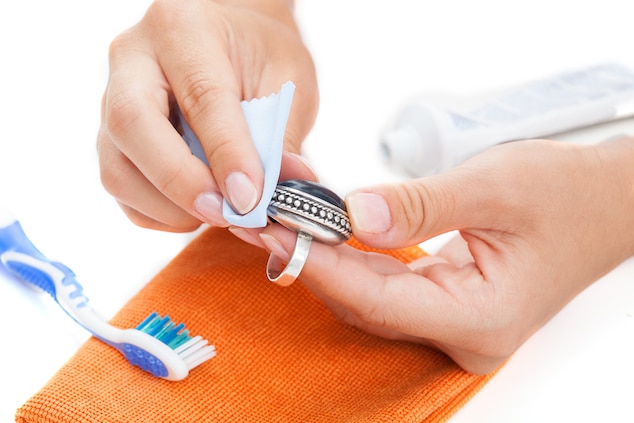

Clean Silver Jewelry At Home: Ingenuous & inexpensive house hold items available to get professional results and brand new look.
If you have used silver jewelry for a while, you are well aware of the ugly coating that it develops with time. This coating destroys the shinny nature of silver. It makes it less attractive and can destroy its appeal.
Unfortunately, this undesirable coating is virtually inevitable. This is because it develops when silver reacts with elements in our environment. Simple harmless things like bodily secretions, skin products, bathing water, and even air can slowly react with your silver hence giving it the unpleasant look.
The good news is that it is easy to get rid of this coating. There are numerous products in the market that can completely restore the look of your designer silver jewellery. These products are relatively inexpensive and therefore, you do not need to spend a lot of money when trying to restore the look of your silver jewelry.
What is even better is the fact that it is possible to achieve the same results by using products that are readily available in your home. Simple products like baking soda, salt, lemon juice and toothpaste have proven to be just as effective when it comes to peeling off the ugly coating on silver jewelry.
The following are some of the most effective ways to clean your silver jewelry without having to spend money on specialized products.
Baking soda
Baking soda is by far the best product to use at home. However, it will need help in order to dissolve the ugly coating.
In order to work, the baking soda has to be mixed into boiling water in a bowl. Dipping the silver jewelry in the hot water and leaving it there for about 4 minutes will slowly dissolve the coating. After the 4 minutes, removing it and then drying it with a cloth should be enough to get your jewelry looking as good as new.
This is an inexpensive way of restoring your jewelry and is thus something that you should definitely try. It is also the most effective method as far as at-home solutions are concerned. Therefore, it is the most recommended at-home solution when it comes to getting rid of silver tarnish.
Lemon and salt
A slice of lemon and salt can also do wonders as far as silver jewelry is concerned. To create the stain-removing solution, you will need a bowl, a few tablespoons of salt, boiling water, and a lemon. Start by cutting the lemon in half and then squeeze the lemon juice into the bowl. When done, add a few tablespoons of salt and then mix the resulting solution with boiling water.
With the mixture ready, simply immerse the jewelry in the bowl and then let it sit for about 7 minutes. This should be enough time for the mixture to react with the coating. After the 7 minutes have elapsed, rub off the coating with a clean cloth.
Note that it may take you some time and energy to completely get rid of the tarnish as this method is not as effective as using baking powder. However, it works and it is worth a try. This is so especially if you are worried about using harsh chemicals on your jewelry.
https://youtu.be/Ay6DtmDxPPQ
Toothpaste
Most people love using toothpaste mainly because it is simpler. It is a time-saving option and one can do it without much preparation. As a result, it is perfect for restoring silver jewelry that has just started to lose its shine.
To clean the jewelry with this method, you will just need a small amount of toothpaste. Place the toothpaste on a sponge, and then use it to rub off the coating. When you rinse off the toothpaste with warm water, you should be able to see a difference.
As noted earlier, toothpaste is not the most effective silver-cleaning compound. Therefore, you should only use this method if there is only a slight coating. For heavily tarnished pieces, this method will not do much as far as restoration is concerned.





